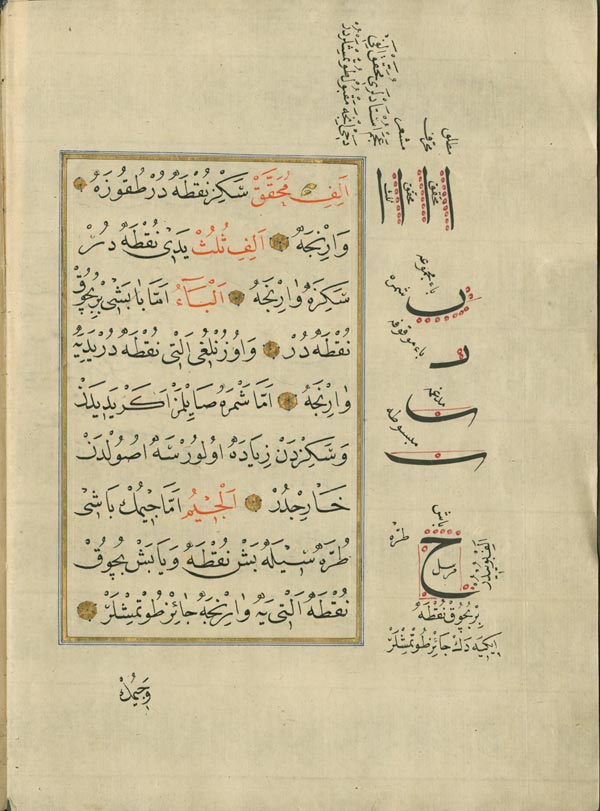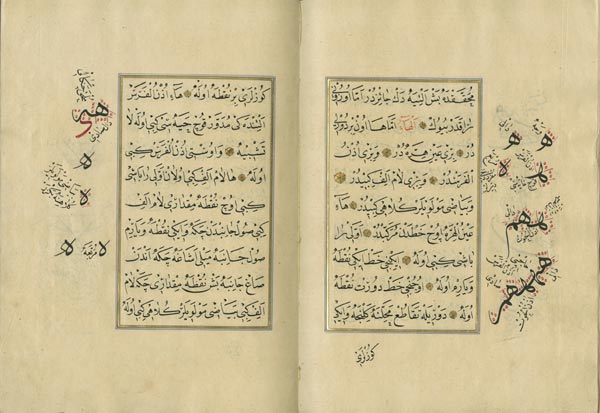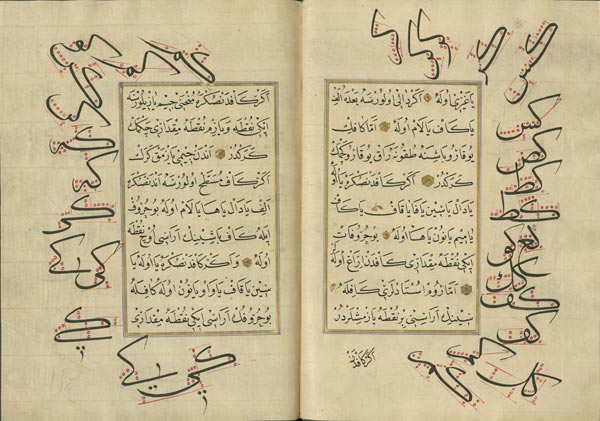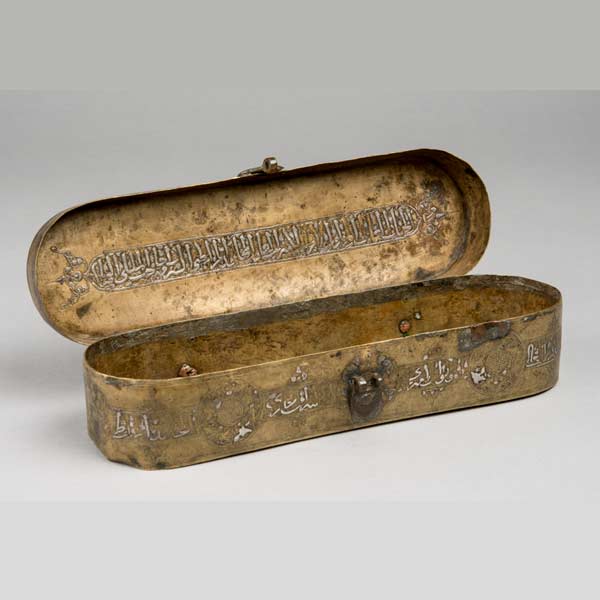Calligraphy Treatise
The Show

Calligraphy Treatise (Risale-yi hat) Penned by the calligrapher Kebecizade Mehmet Vasfi Efendi (d. 1831) Ottoman lands, ca. 1772 Ink on paper Special Collections, Hatcher Graduate Library, Isl. Ms. 401
Calligraphy in the Arabic script is created using a system of proportions based on the rhomboid. This shape is formed when the ink-soaked tip of the reed pen is pressed onto a writing surface like paper. In this calligraphic treatise written in Ottoman Turkish, the scribe demonstrates the rhombic system in the margins, measuring each Arabic letter with rows of red circles.
After many years of training, a calligrapher would not need to measure letters in this way since he could sense proper proportions with each stroke of his pen. For these reasons, this treatise showcases the mastery of the craft along with visual exemplars. Moreover, in his tract the author develops precise terminology for each letterform.
Beyond establishing a system of proportionality, these rhombic marks also possess symbolic meanings. As al-Tawhidi explains, when aligned they act like chains of ordered pearls that parallel the order of the universe and an organized mind filled with knowledge and wisdom. The rhombus is also likened to a blood clot, which represents the origin of life.
Bibliography: Manuscript's online catalogue entry; Schick 2000; Rosenthal 1948; and Schimmel 1987.
Return to the Show


